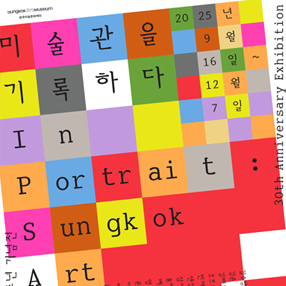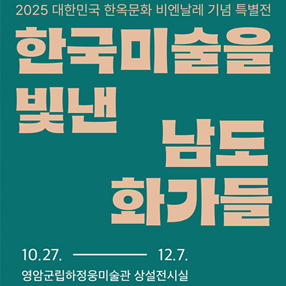본문
-
정종기
talk & nature, 2017, oil on canvas, 162.1x227cm
정종기
talk & nature, 2017, oil on canvas, 140x140cm
정종기
talk & nature, 2017, oil on canvas, 140x140cm
정종기
talk & nature, 2017, oil on canvas, 50x72cm
정종기
talk & nature, 2017, oil on canvas, 65.1x90cm
정종기
talk & nature, 2017, oil on canvas, 40.9x60cm
정종기
talk & nature, 2017, oil on canvas, 45.5x45cm
정종기
talk & nature, 2017, oil on canvas, 97x162cm
Press Release
Jongkie Jeong’s Ways of “Talking” in Nature:
The Painter of Contemporary Life
Yeon Shim Chung
(Professor, Hongik University, Seoul)
Seoul-based Korean artist Jongkie Jeong has been painting anonymous alienated portraiture easily found on streets both in Korea and outside the country. Since the 2000s, he has been painting human figures positioned within endless, open backgrounds. In his latest exhibit, he sets up nature as his pictorial background, placing humans looking at natural landscape. We cannot, however, say that Jeong is a portrait artist because he does not paint the profile of the chosen figures, but rather represents human beings strolling in the phasing, flickering moments, doing tedious and routine daily activities. Jeong is confident in saying that he is a contemporary genre artist, finding the beauty and divine raison-d’être in routine, repetitive daily life.
Jeong’s portraiture has simple features in that he never paints a person’s face but emphasizes the back of the body. Often, the figures in his paintings do not reveal any of the individual characteristics usually found in facial expressions and physical movements. In a way, the artist’s work is ambiguous in that it is not individualistic but collective, anonymous; but the viewer can also find singular characteristics embodied in the figures in his paintings, usually through the hair styles, clothing, simple hair adornments, or accessories such as the meticulously depicted “strands of hair,” that signifier of a person’s individuality.
Most of his paintings reveal the back of the body of the chosen figure, thus symbolizing alienated emotions, turning one’s back on the world, or hiding from the contemporary world. What is created is a world that locks the figure into the open background, which itself functions as a mirror space, or reflective world. In this way, the artist shows the inner vision of the person depicted in the painting, juxtaposing the anonymity vis-à-vis the individuality. In his interview with me, the artist noted that Koreans usually put great emphasis on portraiture when he shows a model’s face, taking the portraiture as the person’s pronoun. The artist then decided to create the back view of the portrait, connoting more social and psychological implications.
Jeong’s paintings in this way create a contemporary “persona” of individual and collective portraiture by embodying unconscious activities of human beings in daily life. I would say that the artist fashions disturbing, uneasy emotions in his early work entitled Their Own Language of 2007, Talk of 2014, as well as his Talk series of 2017 exhibited at the Pyo Gallery in Seoul this year.
Because the artist wanted to demonstrate more about contemporary portraiture in the mass media-oriented society, he tended to emphasize the human back and capturing the person looking into the distant background. We, the viewers, look at the standing figures in the paintings, making ourselves active observers as well as voyeurs because the figures in the paintings are not aware of being looked at. The figures in the works are all occupied with particular tasks ranging from taking care of children, looking at nature, exchanging emotional gazes among the family, and so on. Even the gaze must be hidden because we cannot directly see the face of a person. We can only “imagine” or “sense” what the figures would do or what kind of gaze the person in the painting would evince. This emotional engagement of the viewer and the figures in Jeong’s paintings are interactive in the sense that most of his figures are theatrically positioned. Further, the figures in the artist’s paintings are all engaged, occupied, or indulged in something that we would lead us to define his paintings perhaps as a contemporary work of “absorption.”
The way Jongki Jeong creates absorption, engagement, and theatricality lies in the artist’s use of the camera. As a traveler, stroller, or flâneur, the painter shoots street scenes or catches people indulging in habitual, tedious activities. The artist then employs several photographs in one painting, choosing different figures from different photographs. Sometimes, different time zones overlaps in one painting. It is almost like a photo collage, but Jeong likes to keep the painting’s “aura,” which endures only in the unique existence of the medium, unlike the reproduction qualities of photography. But the artist also keeps the traditional under-drawing of his paintings, as his work creates a space of detailed illusion and illumination.
While mixing digital photography with the traditional process of creating paintings, the artist also deals with his canvas as a mirror or screen of the film in which he captures the close-up figures or chance effects of daily activities. Owing to these technical features, Jeong’s paintings are abstract in the background despite the realism of the treatment of human figures. Considering the aesthetic qualities, we can also note that the scale of the painting is of import in Jeong’s works, noting his creation of the enlarged scope of the figures. The artist also manipulates some parts, blurring in order to create the contrast effects of representational objectivity.
The painterly effects, derived from the use of photography in his working process, allow the viewers to engage with the figures in the alienated, enclosed pictorial space (wall). The screen or background also lets us participate in the “absorption” of the figures in the paintings, by blocking our gaze in the very presence of human figures. Paradoxically, the persons in his paintings are all segregated from certain groups, classes, or societies, but they are not alone because the viewers exchange “silent” emotional engagement or, at least, we share emotional correspondence. The viewer’s gaze penetrates the hidden face of the figures, while both the viewer and the models in the paintings look at the same background, which functions as an invisible wall or screen. In the Korean practice of Buddhism, the meditators look at the wall while practicing asceticism which, finally, leads to introspection and self-reflection as well as enlightenment.
Jongki Jeong’s paintings exhibited at Pyo Gallery in 2017 are somewhat different from the works I describe above. His figures are mostly placed at the beach, looking at the waves and the shoreline, or a sunny sky. Unlike Romantic landscape paintings that emphasize natural “sublime” in the de-emphasis of human beings, Jeong equally stresses human figures in harmony with nature in different scenes and climates. His new 2017 paintings are more vivid, lively, and intimate with their backgrounds, while his works still testify to both single and plural identities in certain social groups, classes, and societies. The artist knows how to play the visible with the invisible, the physical with the emotional, the fewer with the more. At first the paintings are all reserved, but they slowly give rise to social meanings, either psychological or individual/collective.전시제목talk & nature
전시기간2017.10.20(금) - 2017.11.18(토)
참여작가 정종기
관람시간09:30am - 07:00pm
토요일 09.30pm - 06:00pm휴관일일요일 휴관
장르회화
관람료무료
장소표갤러리 PYO GALLERY (서울 용산구 소월로 314 (이태원동) )
연락처02)543-7337
Artists in This Show
1961년 출생
표갤러리(PYO GALLERY) Shows on Mu:um
Current Shows



























